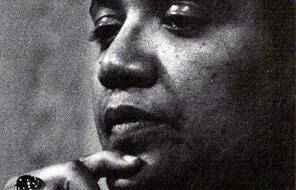November 20 is Transgender Day of Remembrance, which comes at the end of Transgender Awareness Week. On this day, we honor the memory of those who have lost their lives due to anti-transgender violence. In recent years, both Transgender Day of Remembrance and Transgender Awareness Week have also become a time to recognize trans resilience and survival.
We invite you to join Facing History in reflection, listening, and learning on November 20. To help, we've curated some resources you can use to honor Transgender Day of Remembrance as a teacher, both inside and outside the classroom. You might seek out trans perspectives, elevate trans experiences, or take steps to create a more inclusive learning environment for trans and non-binary students.
It's important for trans students to feel safe and included at school. Events like Transgender Day of Remembrance can prompt us to foster greater inclusivity in the classroom. While teachers in some contexts may be more limited in how they can honor this commemoration, all teachers can take steps to create a classroom environment that fosters belonging for all students, including trans students.
How You Can Honor Transgender Day of Remembrance
Here are a few ways that teachers can commemorate Transgender Day of Remembrance:
Learn about Rita Hester’s Story
You may not recognize Rita Hester’s name, but her death sparked the movement that led to Transgender Day of Remembrance. Hester loved figure skating, traveling, and entertaining. She also openly embraced her identity as a Black trans woman. And in 1998, she was murdered. Like far too many murders of trans individuals, the case remains unsolved. You can honor her memory by learning about her life.
Build an Affirming Classroom
Creating classrooms that are inclusive, welcoming, and foster belonging is deeply important for students of all gender identities. Start with yourself by reflecting on your own experiences as both a student and a teacher. Then explore the resources Facing History has curated to help teachers build supportive learning environments for trans and non-binary students.
Reflection questions:
- When did you see your identity reflected in your school or curriculum when you were a student? How did your education provide you with opportunities to engage with life experiences different from your own? Where did it fall short in these two respects?
- When have you observed students to be most motivated in your classroom?
- How might your students’ identities and life experiences be shaping their encounter with the materials you are teaching this year?
- What opportunities do you have to include the voices or experiences of trans people in your curriculum?
- What can you do to continue to build community in your classroom this year?
Plan Trans Day of Remembrance Activities
Honor Trans Day of Remembrance in your classroom or on your own through an activity, discussion, or another form of commemoration. Check out this guide to marking Transgender Day of Remembrance from the GSA Network for a whole host of tips and ideas. Or read on for a few possibilities that stand out to us.
Engage with Trans Oral History
Expose yourself and your students to multiple trans perspectives through oral history. NPR’s StoryCorps has compiled an excellent collection of oral histories that center transgender voices. Stories are powerful teachers. Drawing on diverse voices will help you avoid the pitfalls of relying on a single story. Check out our oral history teaching strategy for activity and lesson plan ideas to pair with the StoryCorps collection.
“Create” a Memorial
Invite students to design a memorial to commemorate Transgender Day of Remembrance. Ask them to consider which events, people, or ideas they would want the memorial to represent. You can adapt Facing History’s Create a Memorial handout for this activity.
We hope these resources and activities help you honor Transgender Day of Remembrance, and ultimately, make your classroom a space where all students can thrive and grow.














